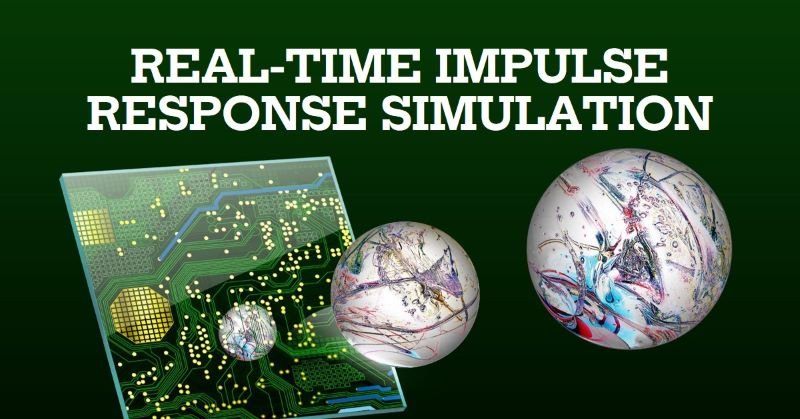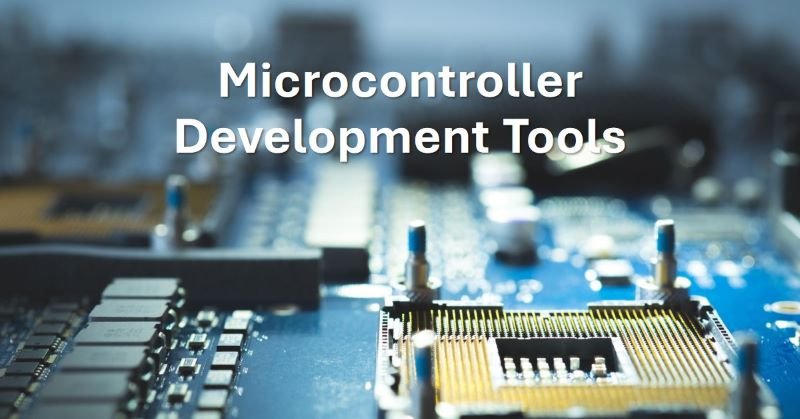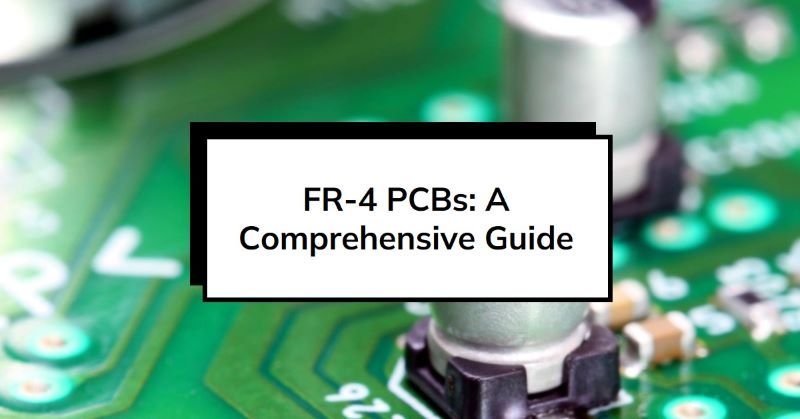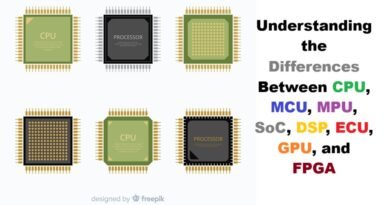STM32 DSP Real Time Impulse Response Simulation in Software
In the field of digital signal processing (DSP), simulating and analyzing the behavior of various systems and algorithms is a crucial step. One key technique in this domain is impulse response simulation, which involves observing a system’s output when subjected to an impulse input. This article explores the implementation of real-time impulse response simulation in software using the STM32 microcontroller family.
What is an Impulse Response?
An impulse response is the reaction of a system when excited by an impulse input signal. Mathematically, an impulse is represented by the Dirac delta function, which has an amplitude of infinity at time zero and zero everywhere else. In practice, a close approximation of an impulse is used, such as a short pulse or a single-sample spike.
The impulse response of a system provides valuable insights into its behavior and characteristics. It reveals the system’s stability, frequency response, and transient behavior, among other properties. Analyzing the impulse response is crucial in designing and optimizing various DSP algorithms and systems, such as filters, control systems, and communication channels.
Real-Time Simulation
Real-time simulation refers to the process of simulating a system’s behavior in real-time, as opposed to offline or pre-computed simulations. In the context of DSP, real-time simulation is essential for applications that require immediate feedback or interaction with the system, such as audio processing, control systems, and embedded signal processing.
Real-time simulation allows for dynamic adjustments and modifications to the system parameters while the simulation is running. This capability is invaluable in scenarios where the system needs to adapt to changing conditions or user input, enabling responsive and interactive DSP applications.
Advantages of STM32 for DSP Applications
The STM32 family of microcontrollers from STMicroelectronics is widely used in various embedded systems and DSP applications. These microcontrollers offer several advantages that make them well-suited for real-time impulse response simulation:
- Powerful DSP Capabilities: Many STM32 microcontrollers feature dedicated DSP instructions and hardware accelerators, enabling efficient execution of DSP algorithms and computations.
- High Performance: STM32 microcontrollers are based on ARM Cortex-M cores, which provide high performance and low power consumption, making them suitable for real-time applications.
- Extensive Peripheral Support: The STM32 family offers a wide range of peripherals, including timers, ADCs, DACs, and communication interfaces, facilitating the integration of various input and output signals required for DSP applications.
- Memory Options: STM32 microcontrollers are available with varying amounts of flash and RAM memory, allowing developers to choose the appropriate configuration for their specific DSP application requirements.
- Development Tools and Ecosystem: STMicroelectronics provides a comprehensive ecosystem of development tools, libraries, and software support, simplifying the development process for STM32-based DSP applications.
Software Architecture
The implementation of real-time impulse response simulation on an STM32 microcontroller typically involves the following software components:
- Main Application Loop: This is the core of the application, responsible for managing the overall flow and timing of the simulation. It initiates the impulse input, collects the output data, and performs any necessary post-processing or visualization.
- DSP Algorithm: This component encapsulates the DSP algorithm or system being simulated. It takes the input signal (in this case, the impulse) and generates the corresponding output signal, which represents the impulse response.
- Input/Output Handlers: These components handle the acquisition of input signals (e.g., from ADCs or external sources) and the generation of output signals (e.g., to DACs or other peripherals). They ensure proper timing and synchronization between the input and output data streams.
- Data Buffers: Circular buffers or other data structures are typically used to store the input and output data streams, facilitating real-time processing and analysis.
- Visualization and Analysis Tools: Depending on the specific application, additional components may be included for visualizing the impulse response data, performing further analysis, or providing user interfaces for parameter adjustments.
Real-Time Execution
To achieve real-time execution, the application must adhere to strict timing constraints and efficiently utilize the available hardware resources. The main application loop typically runs in a periodic or interrupt-driven manner, ensuring that the DSP algorithm and input/output handlers are executed at the required sampling rate.
The STM32 microcontrollers offer various timers and interrupt controllers that can be used to precisely control the timing and scheduling of the application tasks. Additionally, the DSP instructions and hardware accelerators can be leveraged to optimize the performance of the DSP algorithm, reducing computational overhead and improving real-time responsiveness.
Example Implementation: FIR Filter
To illustrate the implementation of real-time impulse response simulation on an STM32 microcontroller, let’s consider a simple example involving an FIR (Finite Impulse Response) filter.
FIR Filter Implementation
The FIR filter is a common DSP algorithm used for various applications, such as signal filtering, equalization, and signal conditioning. The impulse response of an FIR filter is determined by its coefficients, which can be designed to achieve specific frequency responses or impulse characteristics.
Here’s a simplified implementation of an FIR filter in C language for the STM32 microcontroller:
#include "stm32.h"
#define FIR_ORDER 8
#define FIR_TAP_SIZE (FIR_ORDER + 1)
// FIR filter coefficients
const float fir_coeffs[FIR_TAP_SIZE] = {0.1, 0.2, 0.3, 0.4, 0.5, 0.4, 0.3, 0.2, 0.1};
// Circular buffer for input samples
float input_buffer[FIR_TAP_SIZE];
uint8_t input_index = 0;
// Output buffer
float output_buffer[FIR_TAP_SIZE];
float fir_filter(float input_sample) {
float output = 0.0;
// Update circular buffer
input_buffer[input_index] = input_sample;
// FIR filtering
for (uint8_t i = 0; i < FIR_TAP_SIZE; i++) {
uint8_t tap_index = (input_index + i) % FIR_TAP_SIZE;
output += fir_coeffs[i] * input_buffer[tap_index];
}
// Update input index
input_index = (input_index + 1) % FIR_TAP_SIZE;
return output;
}
In this example, the fir_filter function implements the FIR filtering algorithm. It takes an input sample and updates a circular buffer (input_buffer) with the new sample. The filtering operation is performed by convolving the input buffer with the filter coefficients (fir_coeffs). The output of the filter is returned as the result.
Real-Time Simulation
To simulate the impulse response of the FIR filter in real-time, we can modify the main application loop to generate an impulse input and collect the corresponding output samples. Here’s an example implementation:
int main(void) {
// Initialize peripherals and buffers
init_peripherals();
memset(input_buffer, 0, sizeof(input_buffer));
memset(output_buffer, 0, sizeof(output_buffer));
// Generate impulse input
input_buffer[0] = 1.0; // Impulse at time 0
// Real-time simulation loop
while (1) {
// Process input samples and generate output
for (uint8_t i = 0; i < FIR_TAP_SIZE; i++) {
float input_sample = input_buffer[i];
float output_sample = fir_filter(input_sample);
output_buffer[i] = output_sample;
}
// Send output samples to DAC or other peripherals
send_output_to_dac(output_buffer, FIR_TAP_SIZE);
// Wait for next sampling period
delay_for_sampling_period();
}
}
In this example, the main loop initializes the peripheral devices and buffers. An impulse input is generated by setting the first sample in the input_buffer to 1.0. The real-time simulation loop then processes the input samples one by one, passing them through the fir_filter function and storing the output.
Conclusion
In conclusion, Real-time impulse response simulation is a powerful technique for analyzing and optimizing DSP systems. The STM32 family of microcontrollers provides a robust platform for implementing such simulations, offering powerful DSP capabilities, high performance, extensive peripheral support, and a comprehensive development ecosystem. By leveraging these features, developers can create responsive and interactive DSP applications that meet the demands of real-time processing.







